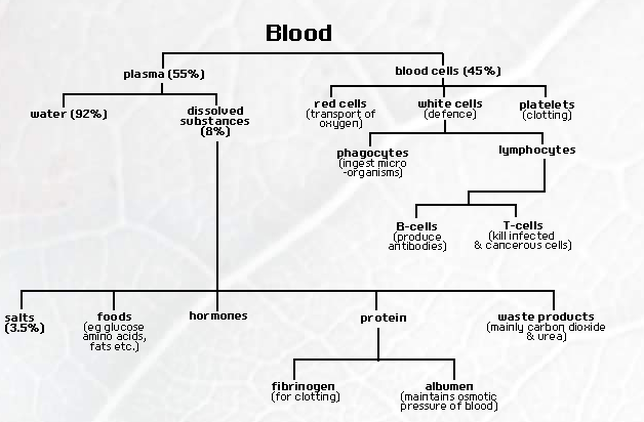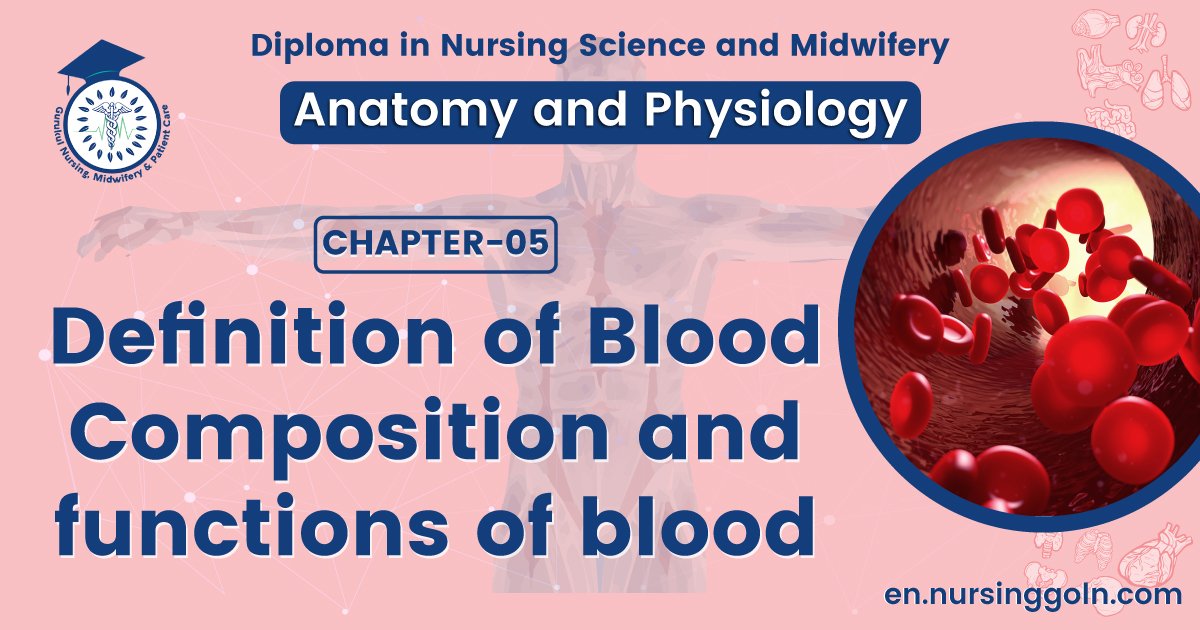Definition of Blood Composition and functions of blood-The course is designed for the basic understanding of anatomical structures and physiological functions of human body, musculoskeletal system, digestive system, respiratory system; cardiovascular system; urinary system, endocrine system, reproductive system, nervous system, hematologic system, sensory organs, integumentary system, and immune system.The aim of the course is to acquire knowledge and skills regarding anatomy and physiology.

Definition of Blood Composition and functions of blood
Blood:
Blood is a specialized fluid connective tissue, composed of plasma (Fluid portion) & formed elements (RBC, WBC & Platelets) circulating through the cardiovascular system.
Physical Characteristics and Volume
- Blood is a sticky, opaque fluid with a metallic taste.
- Color varies from scarlet (oxygen-rich) to dark red (oxygen-poor).
- The pH of blood is 7.35-7.45. (pH = 7 is Neutral solution, Acidic = <7& Alkaline > 7)
- Temperature is 38°C, slightly higher than “normal” body temperature.
- Blood accounts for approximately 8% of body weight.
- Average volume of blood is 5-6 L for males, and 4-5 L for females.

Composition of blood:
A. Blood cells (Formed element) -45%
- Red blood cell (RBC) /Erythrocyte
- White blood cells (WBC) /Leukocyte
- Platelets/Thrombocyte
B. Plasma-55%
- Plasma protein.
- Plasma lipid.
- Enzyme & hormones.
- Electrolytes etc

Functions of blood:
- Respiratory: Blood transports respiratory gases
- O2 from the lung to the tissue
- CO2 from the tissue to the lung.
- Nutritional: Blood transports glucose, amino acid, fatty acid and vitamins.
- Defensive:
- It protects the body from various pathogens (by WBC)
- Carries antibody for immunity
- Homeostatic, It maintains
- Water balance
- Electrolytes balance,
- Pressure of blood and
- Temperature
- Excretory: Blood carries the metabolic waste product to the excretory organ (e g- kidney)
- Transport:It acts as a carrier for hormones, enzymes, drugs etc
- Protection-It protects the body from blood loss via clotting mechanisms
(Ref: Ganong, 23 edition, P-521.)
Life span of blood cells
| Blood cells | Life span |
| RBC | About 120 days |
| WBC: Neutrophil Eosinophil | 4-8 hours in circulating blood then another 4-5 days in tissues |
| Basophil: Lymphocyte | Weeks to months |
| Monocyte | 10-20 hours in circulating blood then another several months in tissue as tissue macrophages |
| Platelets | 10-12 days |
Read more:
